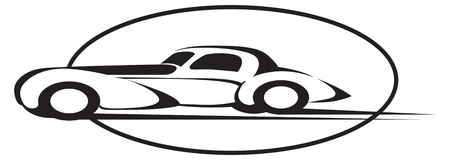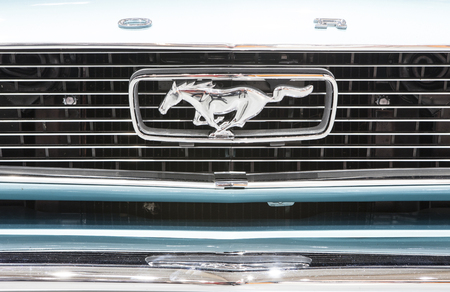1. Introduction: The Birth of an American Classic
The 1960s in America were a time of profound transformation, marked by social upheaval, cultural revolutions, and a booming sense of optimism. This was the era when rock n roll blared from radios, teenagers embraced newfound independence, and the open road symbolized ultimate freedom. In the world of automobiles, Detroit’s Big Three—Ford, General Motors, and Chrysler—were locked in fierce competition to capture the hearts and wallets of a new generation hungry for style and speed. Against this vibrant backdrop, Plymouth introduced a car that would become an icon of its time: the Barracuda. Positioned as a sporty yet practical response to the growing demand for performance cars, the Barracuda made its debut just weeks before Ford’s Mustang, signaling the dawn of the “pony car” era. With its bold fastback design and youthful appeal, the Barracuda embodied the restless spirit of 1960s America—a nation eager to break boundaries and chase excitement wherever it could be found.
Muscle Car Golden Age: The Barracuda’s Heyday
The late 1960s and early 1970s are often remembered as the golden age of American muscle cars, a period when horsepower was king and style was bold. In this vibrant era, the Plymouth Barracuda emerged as a true contender among Detroit’s most iconic machines. Introduced in 1964, the Barracuda initially carved out a niche as a sporty compact, but it wasn’t until the release of the second-generation models—especially after 1970—that it fully embraced its muscle car identity.
Bold Design and Street Presence
The Barracuda’s transformation was dramatic. Plymouth ditched the compact Valiant roots and gave the ’Cuda (as enthusiasts called it) a wide, aggressive stance, fastback lines, and eye-catching details like shaker hoods and racing stripes. These stylistic choices weren’t just for show—they reflected the raw power under the hood.
Performance That Defined an Era
The heart of the Barracuda’s appeal lay in its performance options. Car buyers could choose from a range of powerful V8 engines, including the legendary Hemi. This made the ’Cuda not only a street legend but also a force to be reckoned with on drag strips across America. The table below highlights some of the most popular engine choices during its heyday:
| Model Year | Engine | Horsepower | 0-60 mph (sec) |
|---|---|---|---|
| 1970 | 426 Hemi V8 | 425 hp | 5.6 |
| 1970 | 440 Six-Pack V8 | 390 hp | 5.7 |
| 1971 | 340 V8 | 275 hp | 6.2 |
| 1971 | 383 V8 | 335 hp | 6.0 |
A Detroit Icon Among Legends
The Barracuda held its own against rivals like the Ford Mustang, Chevrolet Camaro, and Dodge Challenger. It became synonymous with American car culture—a symbol of freedom, rebellion, and raw power cruising down Main Streets and highways from coast to coast. Today, its legacy lives on at classic car shows and among collectors who recognize its special place in automotive history.

3. Innovation and Competition: Keeping Up with Detroit
As the American muscle car scene exploded in the mid-1960s, the Plymouth Barracuda found itself in a fierce rivalry with some of Detroit’s biggest names. When Ford unleashed the Mustang in 1964, followed closely by Chevrolet’s Camaro in 1966, Plymouth had to respond quickly to remain relevant. The Barracuda underwent rapid changes to keep up with this high-octane competition. Over the years, engineers and designers worked tirelessly to refine its image and performance, transitioning from a sporty compact based on the Valiant platform into a true muscle car contender.
The second generation, launched in 1967, saw the Barracuda break away from its economy-car roots with more aggressive styling, improved suspension, and a broader range of engine options—including powerful V8s designed to go toe-to-toe with rivals. This period was marked by constant innovation; Plymouth introduced features like fold-down rear seats and expansive glass fastback designs that set the Barracuda apart in both style and practicality. As horsepower wars intensified, so did the arms race under the hood, culminating in legendary models like the ‘Cuda equipped with Chrysler’s mighty Hemi V8.
Despite these advances, staying ahead wasn’t easy. Ford and Chevy had bigger marketing budgets and an ever-expanding suite of trim levels and performance packages. Still, Plymouth managed to carve out a devoted following among drivers who appreciated both the Barracuda’s unique looks and its ability to deliver pure American muscle on demand. Each new model year brought fresh attempts to innovate—whether through bolder paint schemes, shaker hoods, or drag-strip-ready setups—all while trying to predict what young buyers would crave next.
4. Changing Times: The Decline of the Barracuda
The Plymouth Barracuda, once a symbol of American muscle and performance, began to lose its luster as the 1970s unfolded. A combination of economic upheavals, shifting consumer tastes, and new regulatory pressures converged to spell trouble for this iconic car. One of the biggest factors was the oil crisis of 1973, which sent gasoline prices soaring and forced Americans to rethink their love affair with high-powered V8 engines. Fuel efficiency became a buzzword, and suddenly, the Barracuda’s gas-guzzling nature was a liability rather than an asset.
Another key factor was the changing landscape of automotive regulations. New emissions standards and safety requirements put additional pressure on manufacturers to redesign their vehicles, often at the expense of performance and style. The result was that muscle cars like the Barracuda lost much of their raw appeal as horsepower numbers dropped and aggressive styling gave way to more conservative designs.
Consumer preferences were also evolving rapidly during this period. The American public began prioritizing practicality, reliability, and comfort over raw speed. Imports from Japan and Europe—offering fuel-efficient, dependable cars—started gaining traction in the U.S. market. This shift is reflected in the following comparison:
| Barracuda (Early 1970s) | Popular Imports (Early 1970s) | |
|---|---|---|
| Fuel Efficiency (mpg) | 10-15 | 25-35 |
| Engine Size (L) | 5.2 – 7.2 | 1.2 – 2.0 |
| Price Range (USD) | $3,000 – $4,000 | $2,000 – $3,000 |
| Main Selling Point | Performance & Style | Economy & Reliability |
This table highlights how economic realities, environmental concerns, and a desire for practicality overtook America’s appetite for tire-burning power. As these forces gathered momentum, Plymouth struggled to keep the Barracuda relevant in a market that no longer valued what it represented. Ultimately, these changing times set the stage for the Barracuda’s eventual discontinuation at the end of the 1974 model year.
5. Legacy: The Barracuda’s Impact and Cultural Footprint
Few cars have left as enduring a mark on American automotive culture as the Plymouth Barracuda. While it may not have reached the commercial heights of some of its competitors, the Barracuda became an icon for car enthusiasts and collectors alike. Its daring styling, especially in the third generation, set new standards for muscle car design and performance. The Barracuda’s influence is still evident today at classic car shows across the United States, where meticulously restored ‘Cudas draw crowds and spark passionate discussions about horsepower, originality, and nostalgia.
Collector’s Value and Rarity
Over the years, the Plymouth Barracuda has become one of the most sought-after American muscle cars, especially the high-performance variants like the HEMI ‘Cuda. Low production numbers combined with legendary performance have turned certain models into prized collector’s items. Auction prices for well-preserved or expertly restored Barracudas regularly reach six figures, reflecting their status as both automotive treasures and investments. The rarity of original parts and authentic restorations only adds to their allure within the collector community.
Cultural Relevance Today
The Barracuda’s legacy extends beyond garage walls and auction blocks. Its image continues to be celebrated in popular media, from movies to video games, symbolizing freedom, rebellion, and American ingenuity. Modern reinterpretations by custom builders and aftermarket tuners keep the spirit of the ‘Cuda alive for a new generation that appreciates both vintage style and modern engineering. Even decades after production ended, the Barracuda remains a touchstone for what makes a true American classic.
A Lasting Symbol of Innovation
The rise and fall of the Plymouth Barracuda reflect broader trends in American automotive history—innovation, fierce competition, changing consumer tastes, and eventual nostalgia for a golden era gone by. As more enthusiasts discover or rediscover this legendary nameplate, its place in car culture is only further cemented. Whether roaring down a drag strip or gleaming at a weekend meet-up, the Barracuda endures as a symbol of bold design and unbridled performance—proof that true legends never fade away.


